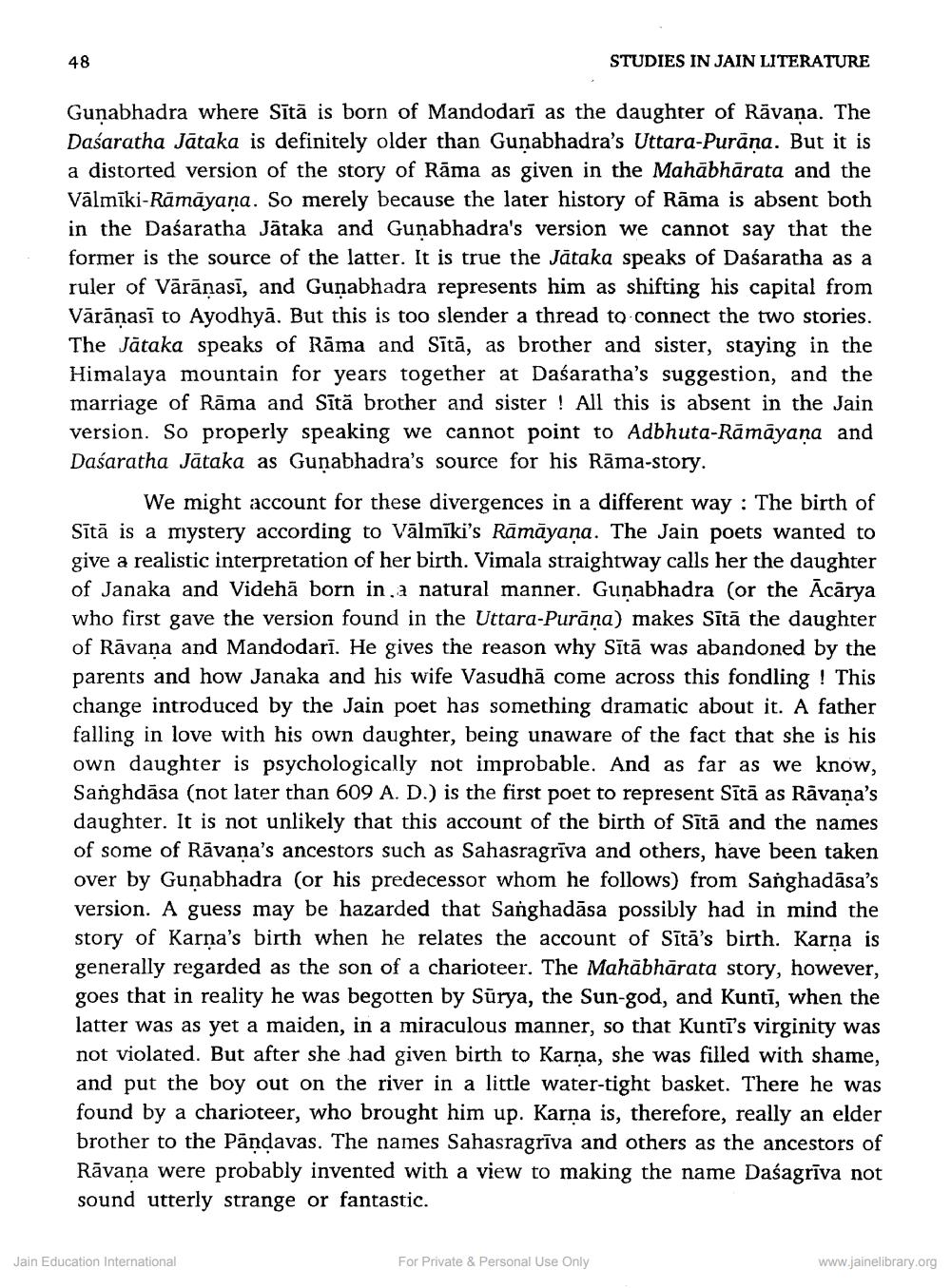________________
48
STUDIES IN JAIN LITERATURE
Gunabhadra where Sītā is born of Mandodarī as the daughter of Rāvana. The Dasaratha Jātaka is definitely older than Gunabhadra's Uttara-Purana. But it is a distorted version of the story of Rāma as given in the Mahābhārata and the Vālmīki-Rāmāyana. So merely because the later history of Rāma is absent both in the Dasaratha Jätaka and Gunabhadra's version we cannot say that the former is the source of the latter. It is true the Jātaka speaks of Dasaratha as a ruler of Vārānası, and Gunabhadra represents him as shifting his capital from Vārāṇasī to Ayodhyā. But this is too slender a thread to connect the two stories. The Jātaka speaks of Rāma and Sītā, as brother and sister, staying in the Himalaya mountain for years together at Daśaratha's suggestion, and the marriage of Rāma and Sītā brother and sister ! All this is absent in the Jain version. So properly speaking we cannot point to Adbhuta-Rāmāyana and Dasaratha Jataka as Gunabhadra's source for his Rāma-story.
We might account for these divergences in a different way : The birth of Sītā is a mystery according to Vālmīki's Rāmāyana. The Jain poets wanted to give a realistic interpretation of her birth. Vimala straightway calls her the daughter of Janaka and Videhā born in a natural manner. Gunabhadra (or the Ācārya who first gave the version found in the Uttara-Purāna) makes Sītā the daughter of Rāvana and Mandodarī. He gives the reason why Sītā was abandoned by the parents and how Janaka and his wife Vasudhā come across this fondling ! This change introduced by the Jain poet has something dramatic about it. A father falling in love with his own daughter, being unaware of the fact that she is his own daughter is psychologically not improbable. And as far as we know, Sanghdāsa (not later than 609 A. D.) is the first poet to represent Sītā as Rāvana's daughter. It is not unlikely that this account of the birth of Sītā and the names of some of Rāvana's ancestors such as Sahasragrīva and others, have been taken over by Gunabhadra (or his predecessor whom he follows) from Sanghadāsa's version. A guess may be hazarded that Sanghadāsa possibly had in mind the story of Karna's birth when he relates the account of Sītā's birth. Karna is generally regarded as the son of a charioteer. The Mahābhārata story, however, goes that in reality he was begotten by Surya, the Sun-god, and Kunti, when the latter was as yet a maiden, in a miraculous manner, so that Kuntīs virginity was not violated. But after she had given birth to Karna, she was filled with shame, and put the boy out on the river in a little water-tight basket. There he was found by a charioteer, who brought him up. Karna is, therefore, really an elder brother to the Pandavas. The names Sahasragrīva and others as the ancestors of Rāvana were probably invented with a view to making the name Daśagrīva not sound utterly strange or fantastic.
Jain Education International
For Private & Personal Use Only
www.jainelibrary.org




